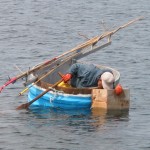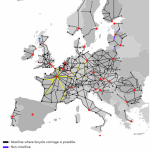“One of the problems with the post-growth movement is that it can appear theoretical. No matter how confident we might be, we lack proof that a post-growth economy is possible. Or do we? Perhaps the world already has a post-growth society, albeit an unintentional one. Here’s what Japan’s GDP has been up to for the last twenty years.”
“As far as economists are concerned, this is a tragedy and a disaster. And yet, the lights are still on, everything still works. Literacy is high, and crime is low. Life expectancy is better than almost anywhere on earth – 82 years to the US’ 78. The trains run to the second. Unemployment is only 5%, and levels of inequality are enviable. So maybe Japan isn’t a failure. Maybe it’s just ahead of its time – not ‘stagnating’, but settling into the plateau of ‘enough’.” Read.






